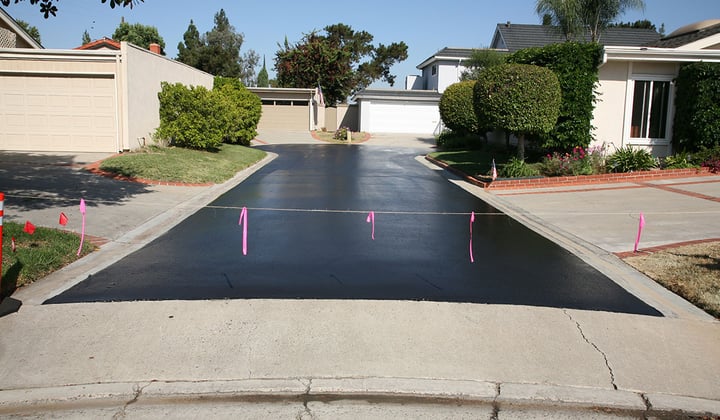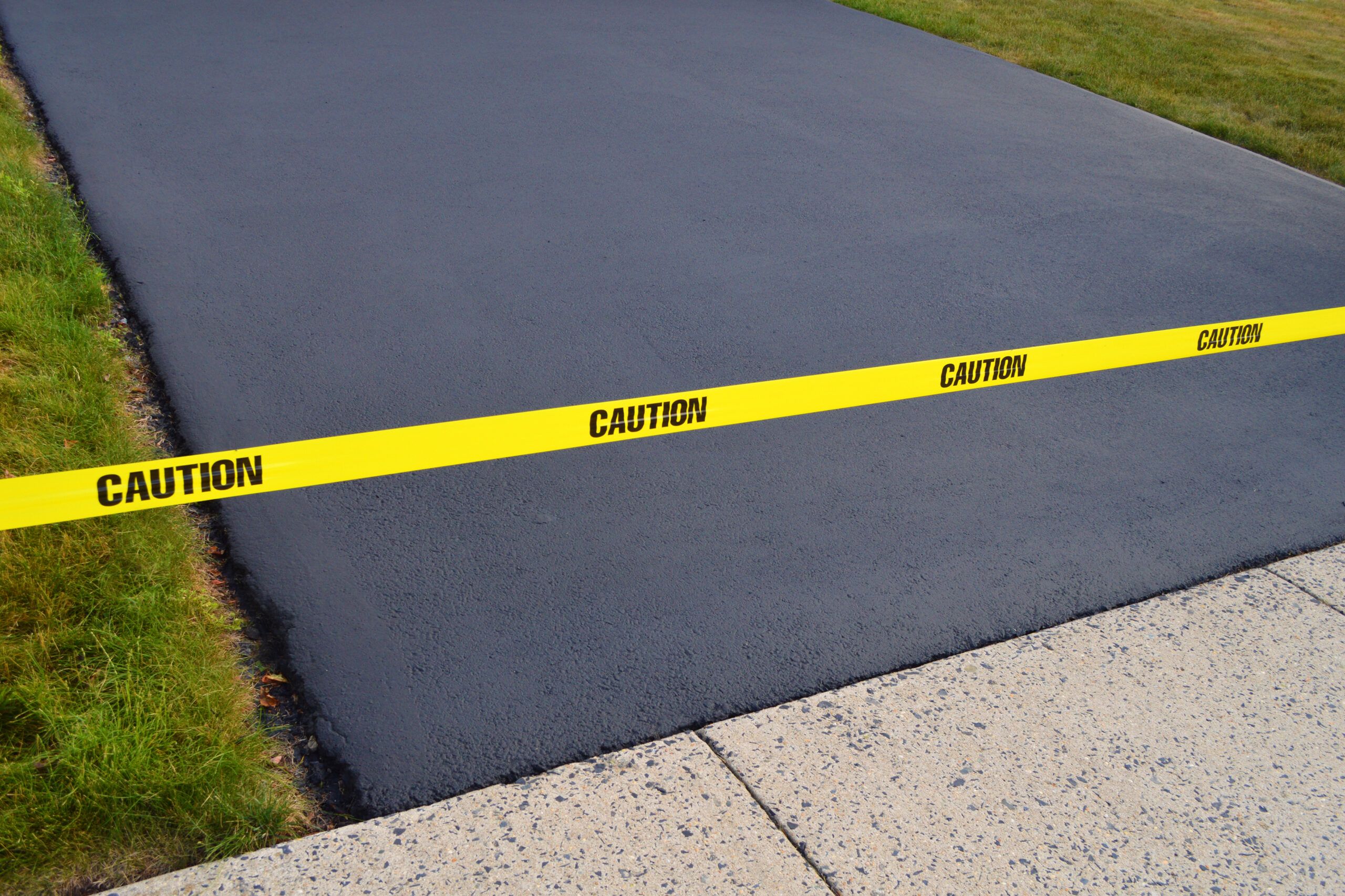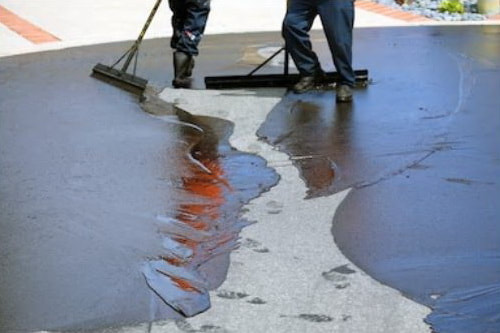Open the Tricks of Asphalt Sealing: Optimizing Warm Mix Asphalt Long Life
Open the Tricks of Asphalt Sealing: Optimizing Warm Mix Asphalt Long Life
Blog Article
Warm Mix Asphalt: A Lasting Option for Pavement
Warm Mix Asphalt (HMA) has arised as a leading lasting option for sidewalk solutions, providing a myriad of ecological benefits and innovative technologies. Its capability to reduce and reuse materials energy intake offers a compelling instance for its adoption in roadway building jobs. The lasting performance and longevity of HMA make it a favored alternative for infrastructure development. As the need for environmentally friendly building practices grows, checking out the subtleties of HMA's sustainability can offer beneficial insights right into the future of pavement remedies.
Environmental Advantages of Warm Mix Asphalt

Additionally, Hot Mix Asphalt aids to alleviate metropolitan warmth island results. Its dark shade absorbs sunshine, decreasing the quantity of warmth reflected back right into the environment compared to lighter-colored sidewalks. This can lower ambient temperatures in city areas, decreasing the demand for a/c and eventually reducing power usage.
Furthermore, Warm Mix Asphalt contributes to boosted stormwater management. Its porous nature allows water to charge and penetrate the sidewalk groundwater products, minimizing runoff and the risk of flooding. These environmental benefits make Hot Mix Asphalt a lasting option for leading roadways and highways.
Energy Efficiency in HMA Manufacturing
Is energy performance a critical consider the manufacturing of Hot Mix Asphalt (HMA)? Definitely. Energy plays a considerable role in the production of HMA, impacting both price and environmental sustainability. One vital element of power effectiveness in HMA production is the use of cozy mix asphalt (WMA) innovations (commercial parking lot paving). WMA enables for the blending and positioning of asphalt at lower temperatures contrasted to standard warm mix asphalt, leading to decreased energy consumption during manufacturing. This procedure not only decreases gas usage yet also lowers greenhouse gas discharges, making it an extra ecologically pleasant option.
Additionally, innovations in plant innovations have actually brought about more energy-efficient HMA manufacturing processes. Modern plants are designed with attributes like recycled asphalt pavement (RAP) handling abilities, effective heater systems, and boosted insulation, all adding to energy financial savings. By optimizing energy use in HMA manufacturing, the industry can lower its carbon impact while maintaining top quality sidewalk materials. Power efficiency is, for that reason, a critical consideration in ensuring the sustainability of Hot Mix Asphalt manufacturing.
Recyclability of Hot Mix Asphalt
The recyclability of Hot Mix Asphalt (HMA) is a pivotal facet of its sustainability and lasting ecological influence. HMA is one of one of the most recycled products in the United States, with over 100 million bunches of redeemed asphalt sidewalk (RAP) being reused yearly in brand-new pavement building. Reusing HMA uses a number of environmental benefits, such as reducing the need for virgin products, reducing power consumption throughout manufacturing, and reducing the amount of waste sent out to landfills.
The procedure of reusing HMA includes crushing the existing sidewalk, crushing it right into smaller items, and mixing it with brand-new aggregate and asphalt binder to produce a recycled mix. This recycled mix can often do as well as or perhaps far better than traditional HMA, while needing fewer raw products and creating reduced greenhouse gas emissions. By incorporating RAP right into new pavement jobs, road agencies can preserve natural deposits, lower costs, and reduce the environmental impact of road building and construction and maintenance tasks. On the whole, the recyclability of HMA plays a significant role in advertising sustainable practices within the pavement sector.

Long-Term Efficiency of HMA
Asphalt sidewalks demonstrate toughness and resilience over an extensive duration, reflecting the long-term performance of Warm Mix Asphalt (HMA) The long life of HMA can be associated to its ability to withstand heavy traffic loads, rough climate condition, and the effects of aging. Research studies have actually shown that properly designed and effectively created HMA sidewalks can last for 20 years or more with regular upkeep. The secret to making best use of the lasting performance of HMA depends on using top quality materials, following ideal techniques in building, and executing effective upkeep approaches. Correct drain, routine inspections, and prompt repairs are crucial for protecting the architectural honesty of HMA pavements in time. Furthermore, improvements in HMA modern technology, such as making use of polymer-modified binders and warm mix asphalt, have additionally enhanced the resilience and durability of HMA sidewalks. By prioritizing top quality building and construction and upkeep techniques, HMA remains to confirm itself as a cost-efficient and sustainable solution for durable pavement facilities.

HMA: Resilience and Sustainability
Demonstrating both toughness and sustainability, Warm Mix Asphalt (HMA) has actually come to be a keystone in the building and construction of resilient pavement infrastructures - helpful hints hot mix asphalt. HMA's sturdiness originates from its capability to endure hefty loads, extreme climate condition, and high website traffic quantities, making it a trustworthy option for roads, freeways, and airport terminal runways. The structure of HMA, which normally includes aggregates, binder, and filler, plays an essential role in improving its durability and resistance to damage
Additionally, HMA's sustainability exists in its recyclability and energy-efficient manufacturing procedure. The capability to recycle redeemed asphalt sidewalk (RAP) in new HMA mixes reduces the demand for virgin products and reduces the ecological influence of pavement building and upkeep. In addition, the power effectiveness of creating HMA hinges on its reduced mixing temperatures contrasted to other pavement products, causing lowered energy consumption and greenhouse gas discharges.
Conclusion
In conclusion, warm mix asphalt (HMA) provides a lasting solution for sidewalk with its ecologically friendly attributes. HMA's recyclability, energy performance in manufacturing, and long-term sturdiness make it an eco-friendly option for roadway building. By saving natural deposits, lowering waste, and lowering greenhouse gas exhausts, HMA plays a vital function in have a peek at this site promoting sustainability in infrastructure growth. Its ability to alleviate urban heat island results additionally underscores its significance in developing environmentally conscious and durable sidewalk systems.
HMA is one of the most recycled materials in the United States, with over 100 million bunches of recovered asphalt pavement (RAP) being recycled annually in brand-new sidewalk construction.The process of reusing HMA involves milling the existing sidewalk, crushing it into smaller pieces, and mixing it with brand-new accumulation and asphalt binder to develop a recycled mix.Asphalt sidewalks show durability and resilience over a prolonged period, mirroring the long-lasting performance of Hot Mix Asphalt (HMA) Furthermore, improvements in HMA technology, such as the usage of polymer-modified binders and cozy mix asphalt, have actually even more enhanced the longevity and longevity of HMA sidewalks. The capability to reuse recovered asphalt sidewalk (RAP) in brand-new HMA combinations minimizes the YOURURL.com need for virgin products and minimizes the environmental effect of sidewalk construction and upkeep.
Report this page